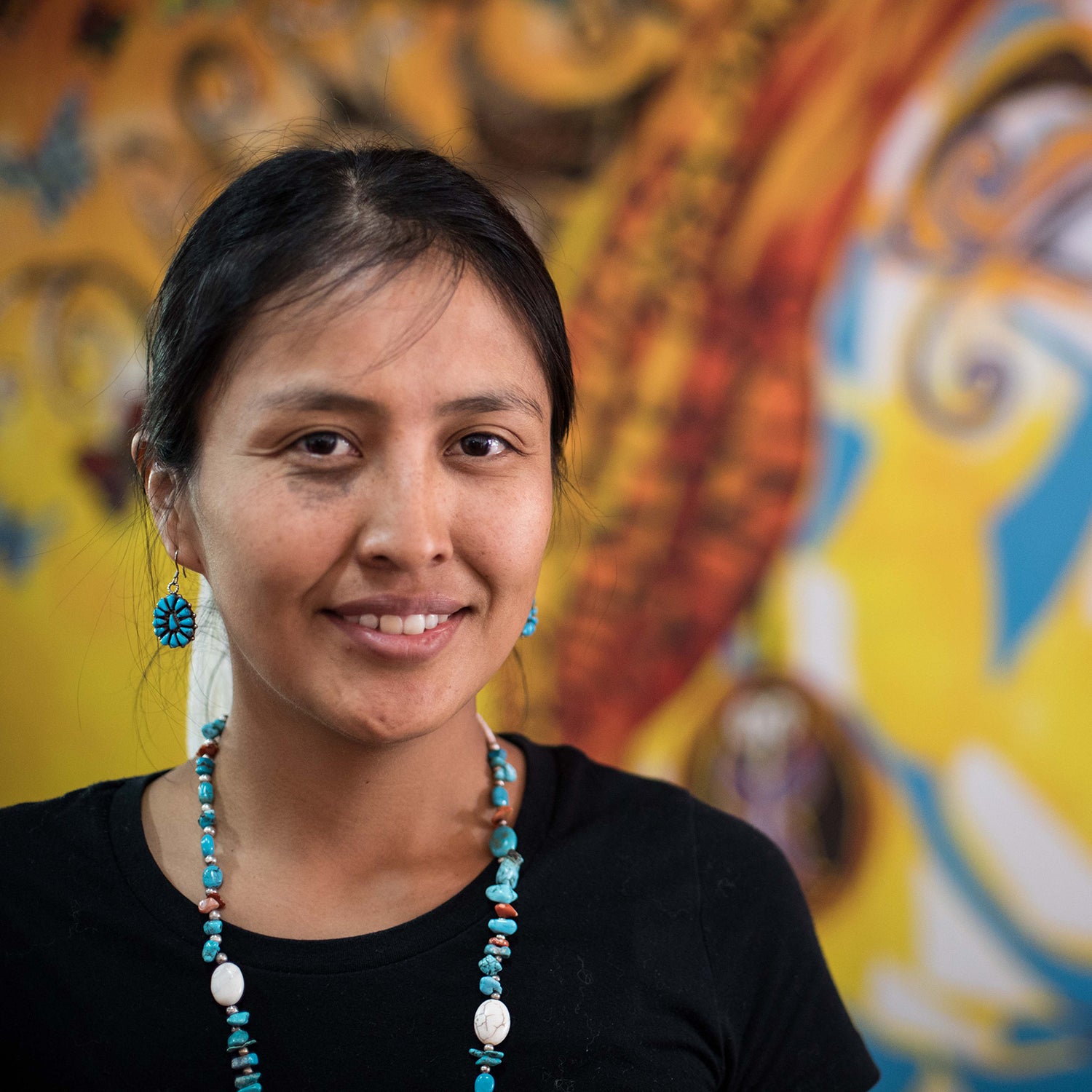While attending Northern Arizona University (NAU) in Flagstaff, Arizona, one of ’s friends invited her to go on her first river trip. “I didn’t even know what that meant,” says Nikki. “I started going out on the San Juan River, in Utah, and I got into it.” Soon she was working as a guide on the river and realized that she was good at taking care of people, and she was already accustomed to the tough physical labor.
As kids in Shonto, Arizona, on the Navajo Nation, Nikki and her six siblings grew up without electricity. Their closest water source was 15 miles away. Nikki would often help herd the family’s flock of 100 sheep during the day, then come home at night as the sun sunk below the horizon. She recalls falling asleep outside on the roof, watching the stars.
Years later, on a trip down the San Juan, Nikki was sitting on the banks of the river as her clients asked her about the stars. “I told Navajo stories about them, and I realized that there was a lack of education for people coming to the river,” she says. “Through our stories, I explained why the Navajo people would take care of the earth and why it was important—how important it is to all of us. To me, being on the river was an amazing feeling. It was like being home.”
Nikki, now 38, started working as an assistant in the Grand Canyon when she was 19 and spent a few seasons working support roles before the company asked her if she wanted to row her own boat. “She didn’t even finish talking before I said yes,” Nikki says. In 2004, she became the first Navajo woman to work as a licensed commercial river guide on the Colorado River. (The first Native female guide on the river was Havasupai; began guiding in 2001, at a time before guides were licensed.)
“I didn’t realize what a monumental event that was at the time. I was just in love with the river,” Nikki says. The job gave her the chance to offer a Native perspective. “I felt it was my duty as a Navajo woman to share why we hold the Grand Canyon so significant. It’s not just stories in a book—the place is intertwined with our daily lives and prayers.”
The Havasupai Tribe still lives inside the canyon. The Hualapai Tribe’s reservation sits on 1 million acres along the canyon’s West Rim. In total, 11 different federally recognized tribes have ties to the canyon. Yet there was almost no discussion of Native perspectives during river trips. Nikki decided to address that issue.
In 2008, she started a at NAU to help get more Native Americans into river guiding. Three years earlier, the president of gifted the university a river permit on the San Juan. Since then, the program has been leading trips and helped certify some 50 guides to lead raft trips through the sacred areas.
Nikki’s sister, Colleen, now 32, soon joined the guiding community, too. She also attended NAU, where she took a multiday trip from Sand Island to Clay Hills, in southern Utah, where the river flows through swaths of tribal land. “It was my first experience being there, and I just felt that immediate connection to it,” says Colleen, who became a guide on the San Juan in 2009. “About three years later, my sister started the river guide training program, and I knew I wanted to be part of that community.”
Between the two sisters, they have nearly 25 years of experience guiding the area’s rivers and have worked to protect them and their surrounding landscapes. Both advocated for , a Navajo-led coalition organized to stop the construction of the Grand Canyon Escalade. The proposed 1.4-mile tramway would have brought 5,000 to 10,000 visitors per day into the belly of the canyon to the Confluence, a spot sacred to multiple tribes where the Little Colorado meets the Colorado. The tribe ultimately rejected the plan. “The Grand Canyon is not a water park. It’s not a pool. It’s someone’s home,” Nikki says.
“Our people were forcibly removed to establish this park and designate these areas,” Colleen says. “Our teachings, our story, our clans, how we identify ourselves is around the water and the land. It’s these places. Once a place is destroyed, you can’t take it back. You can’t undo it.”


